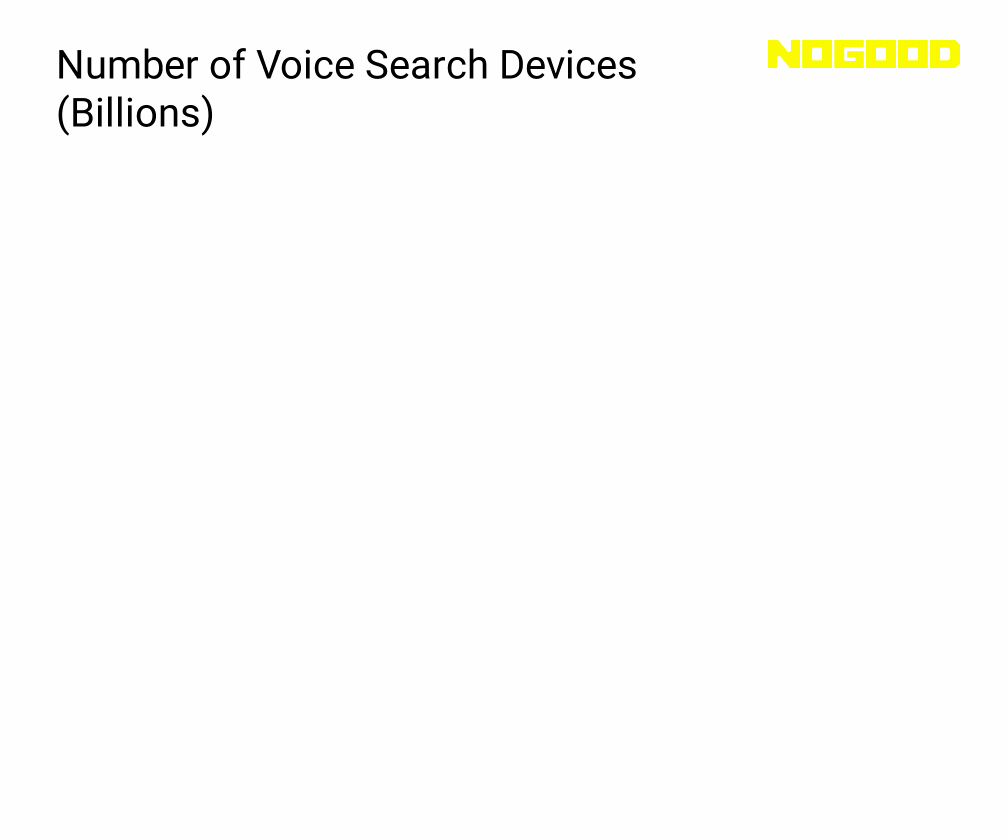With around 1 in 5 people using voice search worldwide, it’s safe to say this technology is here to stay. However, with the introduction of generative AI technologies, it has become more important than ever. Thanks to tools like ChatGPT, Gemini, and even AI Overviews, search has evolved to prioritize direct answers.
Now, instead of typing a few keywords, people are having conversational, multi-turn interactions with their devices. This means that to stay visible, your content can’t just be optimized for keywords; it must be optimized for conversation. As voice assistants like Siri, Alexa, and Google Assistant become more integrated into our daily lives, you need to implement a new set of optimization tactics to stay ahead of this curve.
This guide will act as an actionable playbook to help you adapt your voice search optimization strategy so that your brand doesn’t get left behind.
Future-Proof Your SEO With Voice Search Optimization
What Is Voice Search Optimization?
Voice search optimization is the practice of adjusting keywords, leveraging structured data, and reverse engineering user intent to improve visibility in voice search results.
This involves a deeper focus on conversational language, long-tail keywords, and structured data, all of which help AI better understand the intent behind a user’s query.
Voice search optimization shares similarities with Answer Engine Optimization (AEO), which is the practice of creating and structuring content so it can be easily understood and delivered by AI. Like voice search SEO, the goal of AEO isn’t to rank highly on the page, but to be the definitive source an AI uses to provide an instant answer.
Importance of Voice Search
As mentioned, users expect instant, direct answers, and voice search is designed to deliver just that. The rise of generative AI has led to what’s called “zero-click” search. This is when a search engine, or an AI assistant, provides the answer to a user’s question directly, without the user needing to click through to a website.
Voice search takes this one step further. Instead of wasting time typing something into the SERP or an LLM, users can simply ask their voice assistant their query. This now makes the goal to be the definitive solution to a user’s query, becoming the source that AI uses for its answer.
To optimize for this, your content must be concise and structured in a way that makes it easy for AI to understand and summarize.

Think of voice search as a technological enhancement in customer experience, as it provides direct answers, which promote engagement, retention, and follow-up searches.
Voice Search Statistics
- Around 153.5 million voice searches are expected to be conducted in 2025
- Over 1 billion voice searches are conducted every month
- 41% of voice search results are based on Featured Snippets
Voice Search vs. Text Search
The way people search by text is different from how they search by voice.
When users perform a text-based search, they typically enter short, fragmented keywords instead of the long-tailed variations commonly seen in voice searches.
For example, a text-based search would be “best gaming headset,” but a voice search would be more like: “What’s the best gaming headset for streaming?”
Now, AI algorithms are getting better at identifying user intent from these long-tail, question-based queries, as voice search users expect a direct, relevant answer immediately, unlike text searches.
Because of this, content that is simple, clear, and devoid of fluffy jargon is more likely to be picked up by AI as a source to use in its answers.
How To Optimize for Voice Search
Many blogs break down what they believe to be the best path forward for optimizing for voice search; this list, however, is solely focused on providing you with tangible tactics.
Content Voice Search Optimization
Focus on Conversational, Long-Tail Keywords
Instead of targeting generic, short keywords, build your content around longer, natural questions that users are likely to ask verbally. By directly addressing these in your writing, you increase the likelihood of your content being used as a verbal answer. This strategy is also ideal for multi-turn conversations, as it anticipates follow-up questions and provides a logical path for the AI to follow.
Think about the “who,” “what,” “where,” “when,” and “how” questions related to your business or content. By directly addressing these in your writing, you increase the chances of your content being used as a verbal answer.
You can also use tools to identify the exact questions your audience is asking. Look at “People Also Ask” sections in SERPs and mine community forums like Reddit and Quora. The language they use is the conversational language you should be writing in.

Adopt the “Answer-First” Content Philosophy
Going beyond keywords, you must prioritize creating content that directly answers specific user questions. This positions you as an expert who provides trustworthy information, which signals to AI models that your content is relevant.
AI also craves content that offers something new and valuable. Conduct original research, share proprietary data, or offer a unique expert perspective. This is what truly separates your content from generic text and makes it a prime candidate for voice assistant answers.
The Role of H-E-E-A-T
When a user asks a voice assistant for a recommendation like, “What’s the best moisturizer for dry skin?”, the AI’s first priority is to provide a trustworthy answer. Your brand’s H-E-E-A-T is your most powerful differentiator nowadays, increasing your likelihood of being included in a voice assistant answer.
- Helpfulness: Provide clear, actionable information that solves the user’s problem.
- Experience: Demonstrate that you have first-hand knowledge of the topic.
- Expertise: Showcase the author’s credentials on every article.
- Authoritativeness: Acquire citations from other authoritative sources through digital PR and guest posting.
- Trustworthiness: Ensure your website is secure (HTTPS) and has clear contact information.
Regularly auditing your content to ensure it’s fresh, accurate, and aligned with these principles is a necessity, as AI prioritizes content that is current and reliable.
Technical Voice Search Optimization
Implement Voice Search Structured Data
Structured data helps both search engines and AI understand your content. By using schema markup, you provide a clear roadmap that makes your content easier to parse and use.
FAQ Schema
Long-form questions are a key component of a well-structured voice search optimization strategy, so it makes sense that FAQ schema would be an accompanying tactic. Voice queries are frequently phrased as questions, and if you have the structured data to make your Q&A format clear, your chances of being cited in an answer just shot up.
HowTo Schema
HowTo Schema is great to add to content that provides a step-by-step walk-through. Voice assistants need a hierarchical structure to understand your content, so implementing HowTo Schema helps ensure that your instructions are clear and can be delivered verbally by a voice assistant.
Local Business Schema
Local Business Schema provides crawlers with your business’s location, hours, and services. This assists in localization, making it easy to recommend you to users asking “near me” questions.
Speakable Schema
Speakable Schema is still in beta, but it’s used to identify specific parts of a page that are best suited for audio playback. However, the usability of this is limited and is only available for users in the U.S. on English-speaking devices, though they aim to launch in other countries and languages down the line.
Ensuring AI Crawlability & Indexability
AI models don’t crawl the web in the exact same way as traditional Googlebot. When a user asks a voice query, the AI must retrieve and process information in real time to generate a verbal answer, to make sure to take the following into account:
- Robot Directives: Double-check your robots.txt file. Many websites inadvertently block new AI bots like GPTBot or Google-Extended, which are used by AI models for content retrieval.
- JavaScript Rendering: If your content is rendered client-side, it might be invisible to some crawlers. Solutions like Server-Side Rendering (SSR) or Dynamic Rendering are becoming more important.
- Optimizing for Speed: AI models have strict timeout limits. Your website must have a rapid Time to First Byte (TTFB) and a low Largest Contentful Paint (LCP) to ensure your content is accessible in real-time.
Website Architecture & Internal Linking
A well-structured architecture benefits voice search by making your content more discoverable and authoritative to AI. If an AI can quickly crawl from a high-level “pillar page” (e.g., “Digital Marketing Guide”) to a specific, detailed “cluster page” (e.g., “How to Optimize for Voice Search”) through clear internal links, it’s more likely to identify your site as a comprehensive source for that answer.
Handling Duplicate Content With Canonical Tags
AI crawlers can get confused by duplicate or near-duplicate content, which can dilute your content’s authority and make it less likely to be chosen as the best answer. For voice search, which favors one definitive source, this is particularly damaging. By using rel=”canonical” tags correctly, you can tell AI models which version of the content is the original, ensuring that the authority of your information is not split across multiple pages.
Measuring Success for Voice Search
The metrics you track for this discipline must reflect the unique nature of voice interactions, which prioritize speed, direct answers, and authority.
Key Performance Indicators for Voice Search
Your voice search strategy requires KPIs that track your visibility in a “zero-click” environment.
- Voice Search Citation Rate: This metric measures how often your content is chosen as a verbal answer by a voice assistant. A high citation rate means your content is trusted and optimized for direct answers.
- Voice-to-Action Conversions: For local or transactional queries, the goal is often an action, not a click. This KPI measures how many voice-activated commands (e.g., “call this business,” “get directions,” “add this to my shopping list”) lead directly to a conversion for your business.
- Post-Voice Search Branded Queries: Nowadays, a user might hear your brand’s answer from a voice assistant and then search for your brand name later. An increase in branded search volume in your analytics is an indicator that your content is effective for voice search capture.
- Share of Voice in Verbal Answers: This metric tracks how often your brand is mentioned in AI-generated responses compared to your competitors, indicating your overall spoken market share.
Leveraging Existing Tools With a Voice Search Focus
Your existing SEO metrics are still valuable, but you must approach them differently to track these voice-centric KPIs.
- Google Analytics 4 (GA4): Use GA4 to analyze traffic from long-tail, question-based queries that are likely to originate from voice search. Look for an increase in direct or branded traffic that may be a result of a successful verbal interaction.
- Google Search Console (GSC): GSC is essential for monitoring your performance in voice search. Use it to track which of your content pages are appearing as featured snippets, as these are the primary source for most voice answers. You can also analyze “Performance” reports for conversational queries that are getting impressions but not clicks, indicating they are likely being used for zero-click voice answers.
- Google Business Profile Insights: For local businesses, this is a crucial source of data. Monitor a spike in calls, requests for directions, or website visits that may have been prompted by a voice search (e.g., “Hey Google, find a ‘hair salon near me'”).
Voice Search Schema FAQs
How do I handle the “zero-click” problem where users get my answer but don’t visit my site?
The goal of AEO and voice search optimization is to prioritize brand visibility over direct traffic. You win just by ensuring your brand is consistently cited as the authoritative source in voice search. This builds brand recognition and trust, which can lead to users searching for your brand later on or choosing your product in a store.
Can a small business compete with a large brand for voice search answers?
Yes! Voice search often favors a direct and highly relevant answer. By creating “answer-first” content for niche, long-tail queries, a small business can become the definitive authority on a topic that a larger brand might have overlooked.
How does my social media presence affect my voice search performance?
While social media isn’t a direct ranking factor for voice search, it’s a powerful signal for H-E-E-A-T. A strong social media presence builds a brand’s authority and trustworthiness to AI.
Mentions, citations, and engagement across social platforms help AI understand that your brand is a legitimate and authoritative entity, making it more likely to be cited in a verbal answer.
How will the growth of personalized AI assistants affect my SEO strategy in the future?
As AI assistants offer personalized experiences, your strategy will need to shift from targeting broad queries to individual needs. The focus will move to creating content that is relevant, trustworthy, and addresses a specific user’s context. Your goal will be to establish your brand as an authority that the AI assistant knows it can rely on for a specific type of information.
Is it okay if my content is long and detailed?
Optimizing your content for voice search requires a dual strategy. For a user’s initial, single-turn query, lead with a concise 40-50 word answer at the top of your page, as this is the content most likely to be chosen as a verbal response by an AI.
To capture a multi-turn conversation and establish authority, you should also have a comprehensive article that can answer follow-up questions. This approach ensures your brand wins both the initial query and subsequent questions, giving you a greater share of voice throughout the user’s entire conversational journey.
Hey Google, How Do I Optimize for Voice Search?
Make sure your content is approachable, provides a quick and concise answer, doesn’t include any industry jargon, and puts the users’ needs first.
Optimizing for voice search can be a daunting task, but with a well-structured plan, it’s possible. You likely already have things on your website that can be optimized for voice search with some tweaks. From there, find the topics where featured snippets and AI Overviews are displayed and generated, and target those areas.
And if you ever need advice or are looking for a partner to future-proof your strategy, we’re NoGood for that! Discover how our team of SEO and AEO experts can help you today.




